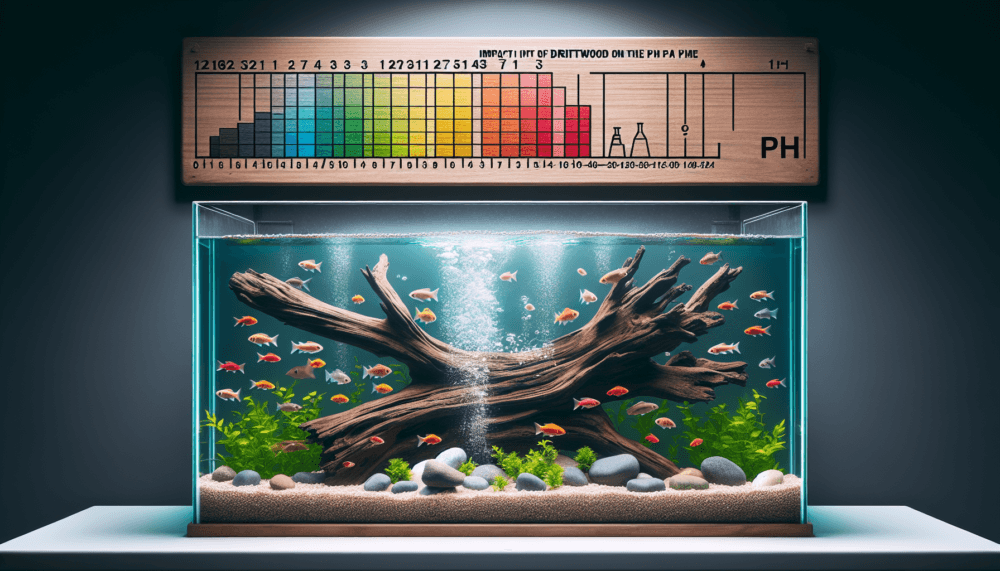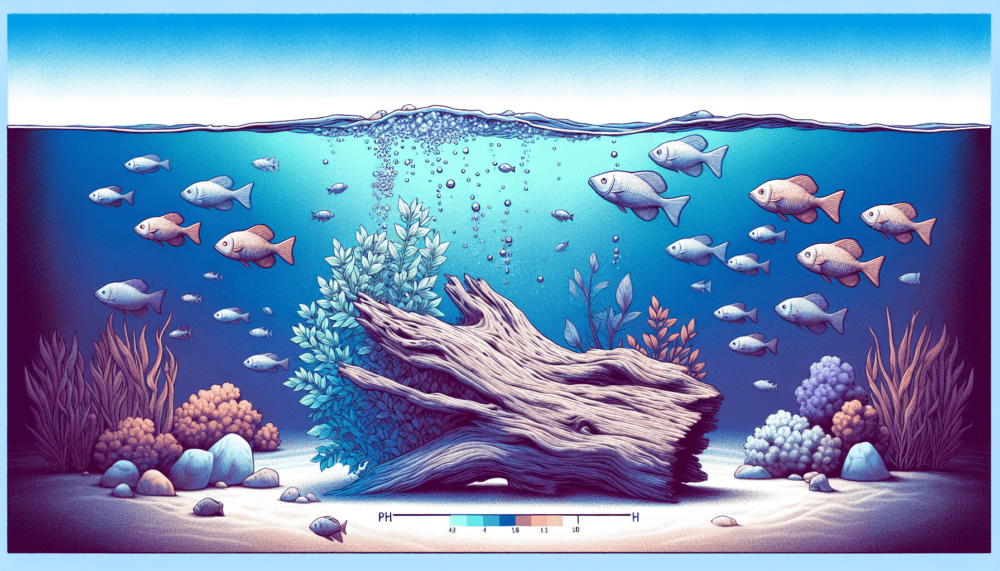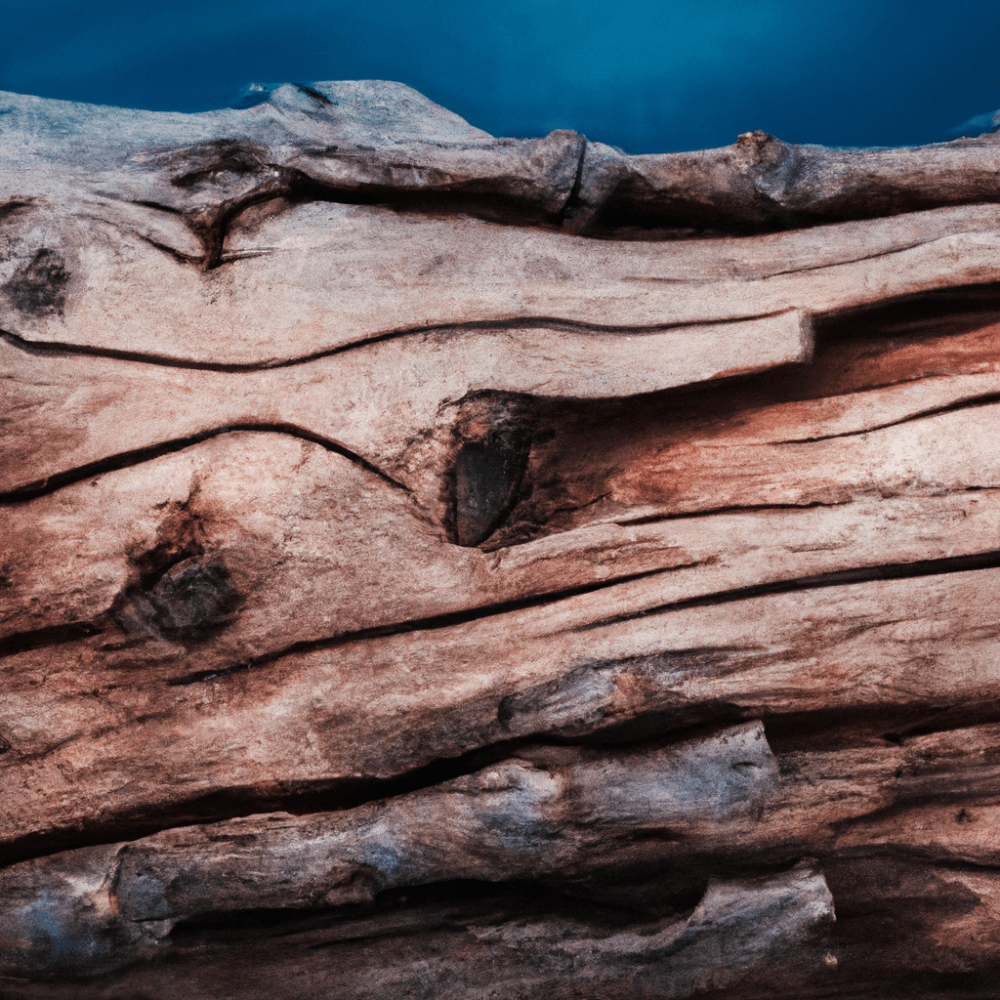Have you ever wondered if driftwood can have an impact on the pH levels of your aquarium? This article explores the potential effects of driftwood on pH levels, addressing the question of whether driftwood raises pH or not. We’ll provide you with a clear understanding of this topic, debunking any misconceptions along the way. So, if you’re eager to learn more about the relationship between driftwood and pH, keep reading!
What is driftwood?
Definition
Driftwood refers to wood that has been washed ashore or floated in bodies of water, such as rivers, lakes, and oceans. It is characterized by its weathered appearance and smooth texture, which is a result of being exposed to water and other elements for an extended period of time. Driftwood usually comes from trees that have fallen into bodies of water or been carried by currents, and it can be found in various sizes and shapes.
Types of driftwood
There are several types of driftwood available for aquarium use, each with its own distinctive features. Some common types include:
- Mopani wood: This type of driftwood is known for its dense and sturdy nature, often featuring intricate branching and gnarled structures.
- Manzanita wood: Manzanita driftwood tends to have a unique reddish-brown color and twisted branches, making it a popular choice for aquascaping.
- Malaysian driftwood: This type of driftwood is often dark in color and has a more uniform appearance, with smooth, curved surfaces.
- Spider wood: Also known as “azalea wood,” spider wood has thin, elongated branches that can create a captivating and intricate look in aquariums.
Properties of driftwood
Driftwood possesses several properties that make it an attractive addition to aquariums. These include:
- Porous nature: Driftwood is highly porous, providing a surface for beneficial bacteria to colonize and aid in biological filtration.
- Release of tannins: Driftwood naturally releases tannins into the water, which can affect the pH level and add a subtle brownish tint to the water.
- Natural pH buffering: Depending on the type of driftwood, it may have the ability to influence and maintain the pH level within a certain range.
- Aesthetics: One of the main appeals of driftwood is its unique and natural appearance, which can enhance the overall visual appeal of an aquarium.
Understanding pH
Definition of pH
pH is a measurement of the acidity or alkalinity of a solution, including the water in aquariums. It is determined by the concentration of hydrogen ions in the water. The pH scale ranges from 0 to 14, with 7 being considered neutral. Values below 7 indicate acidity, while values above 7 indicate alkalinity.
The pH scale
The pH scale is a logarithmic scale, meaning that each whole number change on the scale represents a tenfold difference in acidity or alkalinity. For example, a pH of 6 is ten times more acidic than a pH of 7, while a pH of 8 is ten times more alkaline.
Importance of pH in aquaria
Maintaining the appropriate pH level in aquariums is crucial for the health and well-being of aquatic organisms. Different species of fish and other aquatic creatures have specific pH preferences, and significant deviations from their natural pH range can cause stress, illness, and even death. pH levels also influence the effectiveness of biological filtration and the ability of certain chemicals and medications to work properly.

Factors affecting pH in aquarium
Driftwood as a factor
Driftwood can be one of the factors that affect the pH level in an aquarium. As mentioned earlier, driftwood releases tannins, which can alter the pH of the water.
Relationship between driftwood and pH
The relationship between driftwood and pH is intricate. The type of driftwood, the amount of tannins released, and the buffering capacity of the water can all influence how driftwood affects the pH.
Reasons driftwood might affect pH
Driftwood releases tannins, which are natural organic compounds found in wood. These tannins have acidic properties and can lower the pH level of the water. The extent to which driftwood affects pH depends on factors such as the species of wood, the amount of tannins released, and the buffering capacity of the aquarium water.
How does driftwood influence pH?
Leaching of tannins
When driftwood is submerged in water, it undergoes a process called leaching, where various compounds and substances within the wood are released into the surrounding water. The primary substance released by driftwood is tannins.
Tannins as natural acids
Tannins are natural organic compounds found in many plants, including wood. They possess acidic properties and can lower the pH of the water by increasing its acidity.
Effects of tannins on pH levels
The presence of tannins released by driftwood can result in a decrease in pH levels, making the water more acidic. This lowering of pH can occur gradually over time as the tannins are leached into the water.
Amount of tannins released by driftwood
The amount of tannins released by driftwood varies depending on factors such as the type of wood, its age, and the duration of time it has been submerged. Some types of driftwood release higher amounts of tannins than others, resulting in a stronger impact on pH levels.

Effects of driftwood on pH
Acidic driftwood and low pH
If the driftwood being used in an aquarium releases a significant amount of tannins, it can acidify the water and lower the pH. This acidic environment may be suitable for certain species of fish and plants that prefer lower pH levels.
Neutral driftwood and pH stability
Some types of driftwood have minimal tannin leaching, resulting in a negligible effect on pH levels. Neutral driftwood is less likely to cause significant changes in pH, providing a stable environment for a wider range of aquatic species.
Alkaline driftwood and high pH
While less common, some types of driftwood can have an alkalizing effect on water. This means they can raise the pH level, creating a more alkaline environment. It is essential to consider the specific needs of the fish and plants in the aquarium before using alkaline driftwood.
Other factors influencing pH alongside driftwood
It is important to note that driftwood is not the sole factor that can influence pH in an aquarium. Factors like the source water’s pH, the presence of other decaying organic matter, and the use of chemicals or additives can impact pH levels as well.
Benefits of driftwood in an aquarium
Natural habitat replication
One of the significant benefits of using driftwood in an aquarium is its ability to replicate natural habitat conditions. Many fish species originate from waters with driftwood, so its presence can create a more natural and comfortable environment for them.
Aesthetics and aquascaping
Driftwood is highly valued for its aesthetic appeal in aquariums. Its unique shapes, textures, and colors can enhance the visual appeal, creating a captivating and natural-looking underwater landscape.
Provide hiding spots
Driftwood often has crevices, branches, and hollow areas that serve as ideal hiding places for fish and invertebrates. These hiding spots can help reduce stress by providing shelter and security, mimicking their natural behavior in the wild.
Promote natural behaviors
Many fish species exhibit natural behaviors such as grazing, rubbing, and spawning on or around driftwood. Providing driftwood in the aquarium environment allows these species to engage in their natural instincts, promoting overall well-being and reducing boredom.
Managing pH in an aquarium with driftwood
Choosing compatible fish species
When incorporating driftwood into an aquarium, it is crucial to choose fish species that can thrive within the pH range influenced by the driftwood. Researching the pH preferences of potential fish species and selecting ones that are compatible with the expected pH fluctuations is essential for their long-term health.
Testing and monitoring pH levels
Regular testing and monitoring of pH levels are necessary when driftwood is present in the aquarium. This helps ensure that the pH remains within an acceptable range for the resident aquatic organisms. Test kits specifically designed for measuring pH can be used for accurate monitoring.
Water changes and pH adjustment
Performing regular water changes can help dilute the impact of tannins and maintain stable pH levels. If the pH deviates significantly from the desired range, pH adjustment can be achieved through the addition of pH buffer substances. However, careful monitoring and gradual adjustments are recommended to prevent sudden pH swings.
Other natural methods to control pH
In addition to water changes and pH buffers, some natural methods can help control pH levels in an aquarium with driftwood. The addition of certain aquatic plants, such as Amazon sword or Indian almond leaves, can help counteract the acidifying effects of tannins. Additionally, the use of crushed coral or limestone as substrate can provide long-term buffering capability to maintain stable pH.
Preventing excessive pH changes
Soaking driftwood before adding to the aquarium
Before introducing driftwood to an aquarium, it is advisable to soak it in water for an extended period. This soaking process helps to remove excess tannins and reduce the initial impact on pH and water clarity.
Using pH stabilizers or buffers
If significant pH fluctuations are undesirable, the use of pH stabilizers or buffers can assist in maintaining a stable pH level. These substances help to resist pH changes, providing a more predictable environment for the aquatic organisms.
Maintaining a stable water chemistry
To prevent excessive pH changes, it is essential to maintain stable water chemistry in the aquarium. This includes regular water testing, proper filtration, and correct dosing of water treatments and additives. Consistency in water quality and parameters alleviates stress on the aquatic inhabitants and reduces the potential for pH fluctuations.
Considerations when using driftwood
Compatibility with other aquarium elements
When incorporating driftwood into an aquarium, consider the compatibility with other elements such as plants, substrate, and decor. Ensure that the driftwood complements the overall aesthetics and does not create any obstacles or harm to the aquatic organisms.
Quality of driftwood
Choosing high-quality driftwood is crucial to ensure its safety and longevity in the aquarium. Avoid driftwood that is heavily decayed, fragile, or contains signs of rot or mold. Opt for driftwood that is sturdy, dense, and free from any chemicals or contaminants.
Size and positioning of driftwood
Consider the size of the aquarium and the appropriate proportion of driftwood for the desired aquascape. Placing the driftwood strategically can create visual focal points and ensure that it does not overcrowd the tank or impede water flow.
Regular maintenance and cleaning
Driftwood, like any other aquarium element, requires regular maintenance to prevent the accumulation of debris, algae, or biofilm. Gently scrubbing the driftwood with a soft brush during water changes helps to keep it clean and maintain its visual appeal.
Conclusion
Summary of driftwood’s influence on pH
Driftwood can significantly impact the pH level in an aquarium due to the release of tannins. The amount and type of tannins released by the driftwood will determine the extent of its effect on the pH. Some driftwood can lower the pH, while others may have a neutral or alkalizing effect.
Importance of monitoring and managing pH
Maintaining proper pH levels in an aquarium is crucial to ensure the well-being of aquatic organisms. Regular monitoring, testing, and appropriate adjustments are necessary when driftwood is present to prevent drastic pH fluctuations that can harm the inhabitants.
Benefits and considerations of using driftwood
Using driftwood in an aquarium has several benefits, including natural habitat replication, aesthetic enhancement, hiding spots for fish, and promotion of natural behaviors. However, it is essential to consider factors such as compatibility with other elements, driftwood quality, and regular maintenance.
In conclusion, driftwood can be a valuable addition to an aquarium, providing a natural and visually appealing environment. However, its impact on pH should be carefully considered and managed to ensure the health and well-being of the aquatic organisms. By understanding the influence of driftwood on pH levels and implementing appropriate measures, aquarists can create a thriving and harmonious underwater ecosystem.



